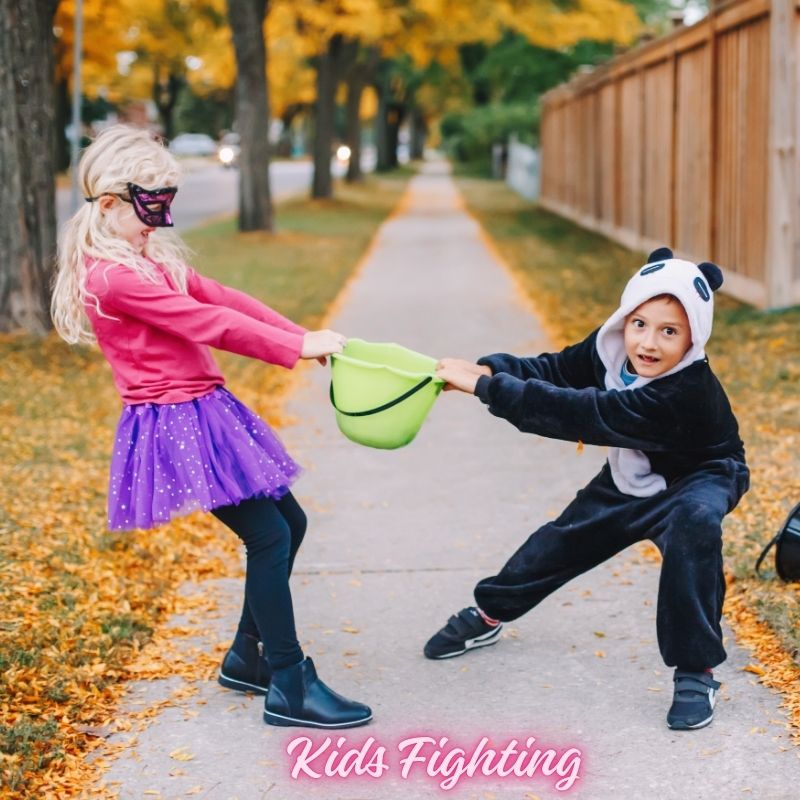
Kids Fighting: Understanding and Guiding Sibling Conflicts
Kids Fighting
Understanding and Guiding Sibling Conflicts
Kids Fighting – When kids fight, it often worries parents, yet it is a natural part of growing up. Sibling conflict usually starts at a young age and continues as children develop their personalities. However, while these clashes may seem disruptive, they can also serve as learning opportunities. Through disagreements, children practice problem-solving, negotiation, and emotional expression.
Furthermore, fights between siblings are not always a sign of deeper problems. In fact, most children argue as they learn to share space, toys, and attention. What truly matters is how parents guide them through these moments. With patience and calm strategies, families can transform conflicts into lessons about empathy and cooperation.
Why Do Kids Fight?
Competition for Attention
Siblings often compete for their parents’ time and approval. This competition can quickly lead to conflicts when one child feels overlooked. Parents should balance attention, ensuring each child feels valued.
Read also – Mindful Parenting Practices: Cultivating Presence and Connection
Differences in Personality – Kids Fighting
Every child has a unique temperament. While one may be quiet, another may be more assertive. These differences can spark misunderstandings that lead to clashes.
Developmental Stages
Children at different stages may have contrasting needs. For example, a toddler might grab toys, while an older sibling wants privacy. This gap often causes friction in daily life.
The Impact of Kids Fighting
Emotional Development – Kids Fighting
Through conflict, children learn to identify feelings such as anger, jealousy, and frustration. Recognizing emotions helps them manage future disagreements more effectively.
Social Skills
When guided properly, kids learn important social skills from fights. They discover compromise, respect, and the value of listening to others’ perspectives.
Family Dynamics – Kids Fighting
Frequent conflict can create tension within the family. However, when parents address issues calmly, fights can strengthen sibling bonds over time.
How Parents Can Respond
Stay Calm and Neutral
Parents should avoid taking sides during conflicts. Instead, they should listen to both children and guide them toward solutions.
Encourage Problem – Solving – Kids Fighting
Rather than solving the fight for them, parents can ask children to suggest solutions. This encourages responsibility and teamwork.
Read also – Slow Parenting: A Gentle Approach to Raising Happy Children
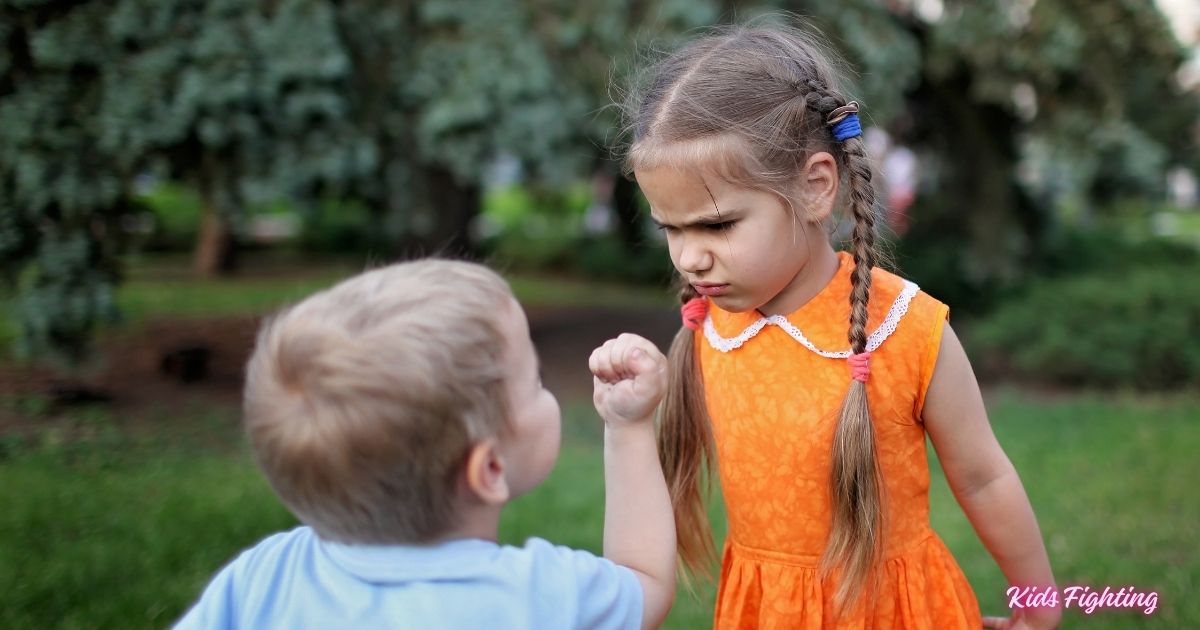
Teach Healthy Communication
Show children how to use respectful words instead of shouting or hitting. Over time, this builds a foundation of healthy conflict resolution.
Preventing Frequent Conflicts
Set Clear Rules – Kids Fighting
Household rules about respect and sharing reduce misunderstandings. Consistency helps children understand boundaries.
Promote Teamwork
Parents can create opportunities for siblings to work together. Group tasks, games, or chores encourage cooperation and reduce rivalry.
Offer Individual Attention
Spending one-on-one time with each child helps prevent jealousy. When children feel secure in parental love, they fight less for attention.
When Fighting Becomes a Concern – Kids Fighting
Occasional arguments are normal, but parents should take note if fights become constant or aggressive. Warning signs may include physical harm, extreme anger, or avoidance between siblings. In such cases, professional guidance from a counselor or family therapist may help restore harmony.
Practical Strategies to Reduce Kids Fighting
When parents notice frequent conflicts, the first step is to establish a home environment built on respect and consistency. Children thrive in structured settings, so creating routines reduces uncertainty and tension. For instance, setting clear schedules for playtime, homework, and chores can prevent arguments about fairness or responsibilities.
Another helpful strategy involves teaching siblings to express their needs respectfully. Parents can model healthy communication by using calm voices and positive body language, even during stressful situations. Children quickly learn by imitation, so showing them how to disagree without anger helps them apply the same approach with each other.
Additionally, praising cooperation is powerful. When siblings play or solve problems together, acknowledging their teamwork reinforces positive behavior. This attention teaches children that working together gains them more recognition than fighting does. Over time, they associate harmony with rewards, both emotional and practical.
It is also essential to provide outlets for excess energy. Many fights arise from boredom or restlessness. By encouraging outdoor activities, sports, or creative projects, parents redirect energy into productive areas. As a result, children have fewer opportunities to argue and more chances to bond.
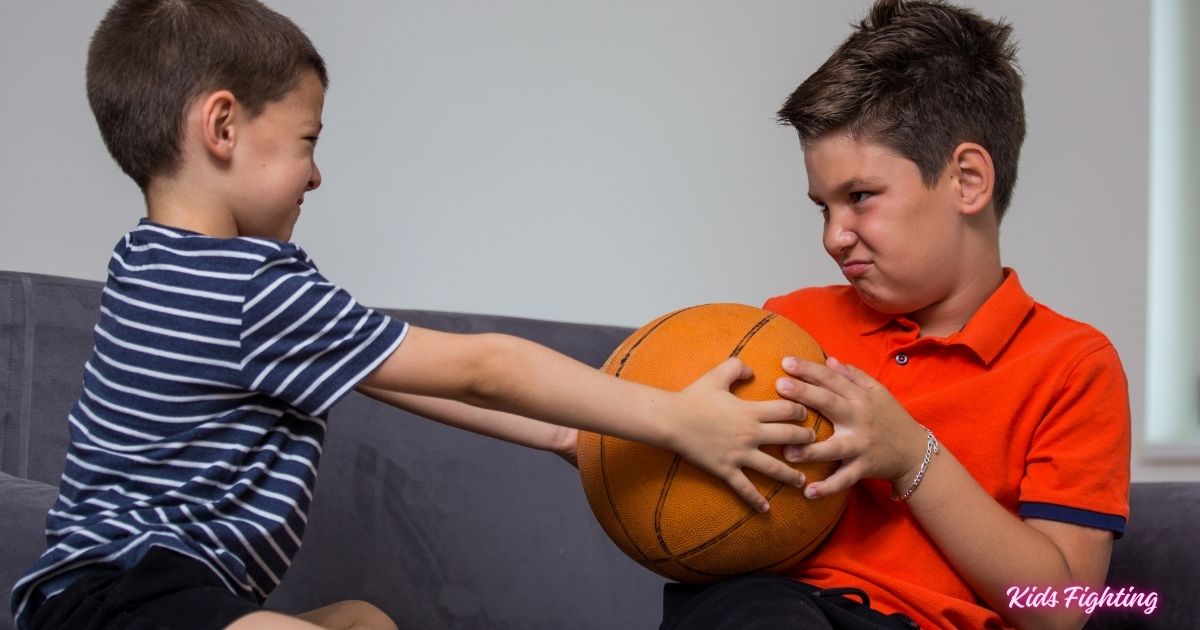
Using Conflict as a Teaching Tool
Although fights can feel disruptive, they can also become valuable lessons. Parents can use these moments to teach empathy by asking children to consider how their sibling feels. Encouraging them to describe emotions in words helps develop emotional intelligence. For example, guiding a child to say, “I feel upset when you take my toy,” gives them tools to handle frustration constructively.
Another approach is problem-solving exercises. Parents can gather siblings after a fight and ask each to propose a solution. This not only helps resolve the immediate issue but also gives children ownership of the outcome. When kids feel involved in decisions, they are more likely to respect agreements.
Furthermore, parents can teach compromise by setting examples in their own interactions. Children who observe adults resolving disagreements fairly and calmly learn that conflicts do not need to end in anger. They understand that finding middle ground is not a weakness but a strength.
Read also – Thrifty Frugal Mom – Navigating Budgets, Savings and a Purposeful Life
Balancing Individual and Shared Time – Kids Fighting
Sibling fights often stem from jealousy, especially when children feel they must compete for attention. To counter this, parents should balance shared family time with individual moments for each child. Reading a bedtime story alone with one child or taking another on a short walk communicates that every sibling is equally valued.
At the same time, shared activities are crucial for building positive sibling bonds. Cooking together, board games, or family outings create memories that overshadow moments of rivalry. These experiences remind children that, although they may argue, their siblings are also their closest companions.
Equally important is teaching respect for personal space. As children grow, they need time alone, and respecting this boundary prevents unnecessary conflicts. Simple rules such as knocking before entering a sibling’s room can make a big difference.
Handling Repeated Conflicts Calmly – Kids Fighting
There are times when siblings argue over the same issue repeatedly. In these cases, parents may feel exhausted. However, remaining calm is vital because frustration often escalates tension. Instead, parents can approach recurring problems with consistency. For example, if children often fight over toys, a rule about sharing or rotating items can prevent constant disputes.
In addition, parents can introduce natural consequences. If a toy causes fights, it may be set aside until siblings can agree on how to use it peacefully. This method teaches accountability and shows children that conflicts carry practical results.
Parents should also avoid labeling children during fights. Calling one child the “troublemaker” or the “good one” creates long-term resentment. Instead, focus on behavior rather than identity. Statements like, “I need both of you to use kind words,” shift attention toward solutions instead of blame.

Encouraging Long-Term Sibling Bonds
Fights may dominate the present, but parents should keep in mind the long-term relationship between siblings. These bonds often last a lifetime, and guiding them through childhood conflicts helps build stronger adult connections.
Parents can encourage siblings to see each other as allies rather than rivals. Highlighting times when they supported each other, even in small ways, reminds them of the value of family loyalty. This perspective reduces competition and fosters unity.
Celebrating differences also strengthens bonds. Instead of comparing siblings, parents can highlight each child’s strengths. Saying, “You are great at drawing, and your brother is great at running,” helps children appreciate individual talents. By recognizing unique abilities, parents reduce rivalry and build mutual respect.
Read also – Authoritative Parenting – Balance Between Warmth and Control
Expert Perspectives on Kids Fighting
Child development experts often remind parents that kids fighting is not always a negative sign. Psychologists note that arguments between siblings can actually be a natural way for children to practice negotiation and conflict resolution. Through disagreements, they learn how to express opinions, test boundaries, and understand different perspectives.
Research also shows that occasional fighting does not damage sibling relationships in the long run. In fact, siblings who argue but also learn to resolve conflicts often build stronger bonds as adults. The key lies in how parents guide them through these moments. Rather than eliminating conflict entirely, the goal should be to teach children how to handle disagreements with respect and patience.
Many experts also highlight the importance of emotional regulation. Children do not naturally know how to control frustration or disappointment. When fights occur, parents can see them as opportunities to teach calming strategies. Simple breathing exercises, short breaks, or quiet reflection can help children learn to pause before reacting. Over time, these skills become invaluable in all areas of life.
Common Myths About Kids Fighting
A frequent myth is that kids fighting means parents are failing. In reality, conflict between siblings is universal and often unavoidable. What matters most is how parents respond. Consistency, fairness, and calm guidance shape the outcome far more than the frequency of fights.
Another myth is that older children should always give in to younger siblings. While teaching patience is important, always placing responsibility on the older child can create resentment. Instead, parents should encourage fairness and balance, where both siblings learn to compromise.
Some parents also believe that ignoring fights completely will make them disappear. While occasional small disagreements can resolve naturally, ongoing or intense conflicts require parental guidance. Without intervention, patterns of disrespect or aggression may form, making it harder for siblings to build positive connections.
Read also – Jellyfish Parenting – Nurturing Independence and Resilience in Growing Minds
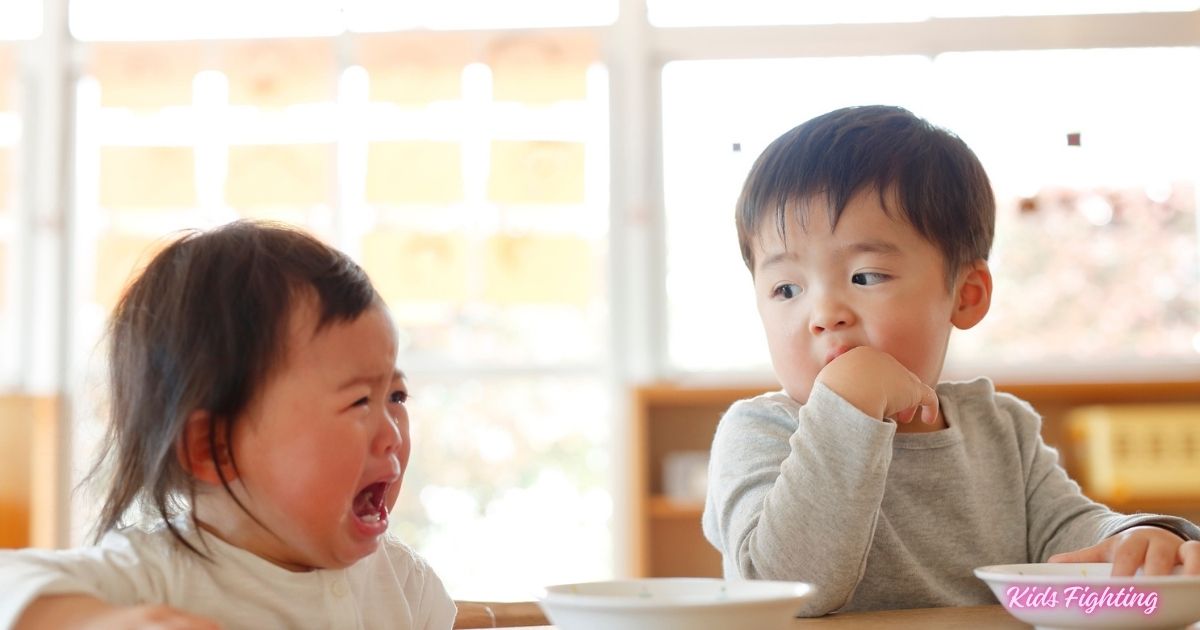
Activities That Promote Sibling Harmony – Kids Fighting
Shared activities are one of the best tools for reducing rivalry. Cooking meals together allows children to divide tasks and enjoy a sense of teamwork. For instance, one child can wash vegetables while another stirs the pot. When the meal is ready, both share pride in their contribution.
Board games are another excellent option, as they teach turn-taking, patience, and sportsmanship. Even when competition arises, parents can guide children toward celebrating each other’s wins and learning from losses.
Creative projects such as building with blocks, painting, or making crafts encourage collaboration without focusing on winning or losing. These experiences highlight the joy of working side by side rather than against each other.
Outdoor activities also strengthen sibling bonds. Sports, biking, or simple walks encourage children to support one another and release energy in positive ways. Nature often provides a calming background that reduces tension and creates shared memories.
Preparing for Long-Term Harmony
While daily arguments may feel overwhelming, parents should focus on equipping children with skills that extend into adulthood. Teaching respect, empathy, and communication ensures siblings grow into supportive family members later in life.
Family traditions play a key role in this process. Celebrating birthdays together, sharing holiday rituals, or even establishing a weekly family night reinforces unity. These traditions remind children that despite disagreements, their bond remains special.
Another long-term strategy is encouraging siblings to support each other’s goals. Parents can invite children to attend one another’s events, such as sports games, art shows, or school performances. By cheering for each other, siblings develop pride in one another’s successes rather than jealousy.
Finally, parents should remind children that family is a lifelong support system. Teaching them to value loyalty, kindness, and cooperation gives them tools to nurture their sibling relationships well into adulthood.
Read also – Almond mom meaning – Thin Line Between Wellness and Unhealthy Influences
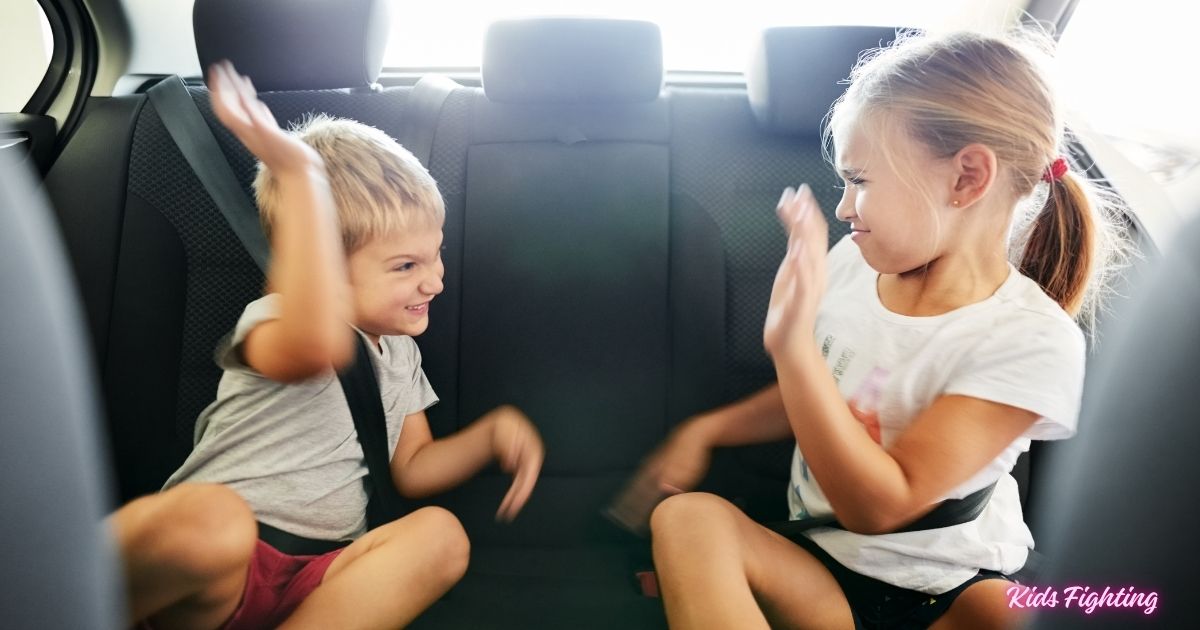
Frequently Asked Questions
Kids often fight due to competition for attention, personality differences, or developmental stages. It is a normal part of sibling relationships.
Set clear rules, encourage problem-solving, balance individual attention, and model respectful communication to guide them toward cooperation.
Occasional conflicts are normal and can teach emotional skills. Persistent aggression may need parental guidance or professional support.
Encourage them to express feelings, propose solutions, compromise, and listen to each other, turning disagreements into learning opportunities.
Individual attention is important to reduce jealousy. Spending one-on-one time and acknowledging each child’s strengths helps prevent frequent conflicts.
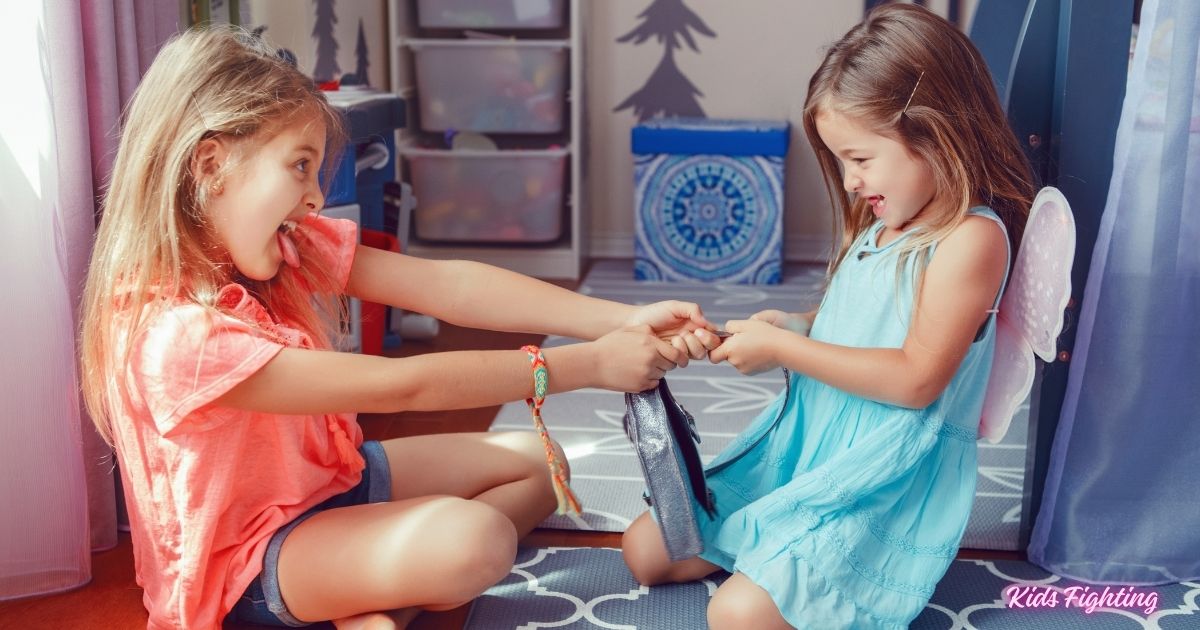
Conclusion
In the end, kids fighting is a natural part of growing up, especially when siblings share space, toys, and parental attention. While these disagreements may sometimes feel overwhelming, they are also opportunities for growth, teaching children how to communicate, compromise, and manage strong emotions. With patience, consistency, and gentle guidance, parents can transform conflicts into valuable life lessons.
By creating an atmosphere of fairness, encouraging teamwork, and modeling respect, families help children build stronger bonds that last well beyond childhood. Even when arguments arise, siblings who learn to resolve their differences often grow into adults who value one another deeply. Therefore, instead of viewing fights as setbacks, parents can see them as steppingstones toward emotional maturity and lasting family harmony.
